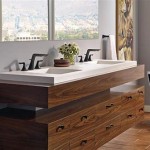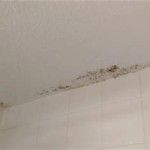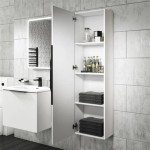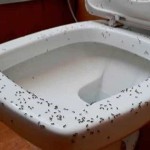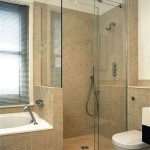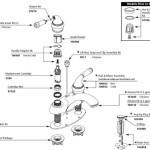How To Clean Mold From Bathroom
Mold thrives in damp, warm environments, making bathrooms a prime location for its growth. Unsightly and potentially harmful, mold requires prompt and proper cleaning to prevent its spread and protect household health. This article provides a comprehensive guide to effectively removing mold from bathroom surfaces.
Identify the Source of Moisture
Before attempting to clean mold, it's crucial to identify and address the underlying moisture problem fueling its growth. A leaky pipe, inadequate ventilation, or consistently damp surfaces can all contribute to mold formation. Repairing leaking fixtures, installing or upgrading exhaust fans, and ensuring proper airflow can prevent mold from returning after cleaning.
Inspecting areas around pipes, faucets, showerheads, and toilets for leaks is essential. Check for signs of water damage such as discoloration, warping, or soft spots on walls and ceilings. If significant water damage is discovered, consulting a professional for remediation may be necessary.
Safety Precautions
Protecting oneself from mold exposure is paramount during the cleaning process. Mold spores can become airborne when disturbed, potentially causing respiratory irritation or allergic reactions. Always wear appropriate protective gear, including gloves, eye protection, and an N95 respirator mask. Adequate ventilation is also essential; open windows and doors, or use a fan to circulate fresh air.
Individuals with pre-existing respiratory conditions, allergies, or compromised immune systems should exercise extra caution or consider having someone else perform the cleaning. Pregnant women should also avoid mold cleanup due to potential risks.
Cleaning Mild Mold Infestations
For smaller areas of mold growth (less than 10 square feet), a DIY cleaning approach is often sufficient. Several effective cleaning solutions can be used, including a mixture of bleach and water, white vinegar, or commercial mold cleaners. It is important to follow product instructions carefully and never mix bleach with ammonia, as this creates toxic fumes.
When using bleach, a solution of one part bleach to ten parts water is generally recommended. Apply the solution to the affected area using a spray bottle or sponge, ensuring complete coverage. Allow the solution to dwell for 10-15 minutes to effectively kill the mold. Scrub the area with a brush to remove the mold, then rinse thoroughly with clean water and dry completely.
White vinegar is a natural alternative to bleach and can be used undiluted. Apply vinegar to the moldy area, let it sit for an hour, then scrub and rinse as with the bleach solution. While less potent than bleach, vinegar is effective against many types of mold and is a safer option for those sensitive to harsh chemicals.
Commercial mold cleaners are also available and often contain specialized formulations designed to effectively kill and remove mold. Always follow the manufacturer's instructions carefully when using these products.
Cleaning Extensive Mold Growth
For larger or more pervasive mold infestations (greater than 10 square feet), it is generally recommended to consult a professional mold remediation specialist. These professionals have the expertise, equipment, and protective gear to safely and effectively remove large-scale mold growth. They can also identify and address the underlying causes of moisture and recommend preventive measures.
Attempting to clean extensive mold growth without proper training and equipment can be hazardous and may not effectively eliminate the problem. Professional remediation ensures thorough removal and minimizes the risk of mold recurrence.
Preventing Mold Growth
Preventing mold growth requires consistent effort and vigilance. Regularly cleaning the bathroom, especially areas prone to moisture, can significantly reduce the likelihood of mold development. Wiping down shower walls and doors after each use, keeping surfaces dry, and promptly addressing leaks are crucial preventative measures.
Ensuring adequate ventilation is also essential. Run the exhaust fan during and after showers and baths to remove excess moisture. Consider installing a timer for the exhaust fan to ensure proper ventilation, especially in bathrooms without windows.
Using mildew-resistant paint and caulking in bathrooms can also help inhibit mold growth. These products contain antimicrobial agents that discourage mold formation, providing an additional layer of protection.
Regularly inspecting for and addressing any signs of moisture or leaks is crucial for maintaining a mold-free bathroom. Prompt action can prevent small problems from escalating into major mold infestations.

How To Clean Black Moldy Shower Or Kitchen Tile And Silicone Caulking Two Methods No Scrubbing

How To Clean A Moldy Shower Super Satisfying With Me

How To Clean Mold In Shower Grout Tips And Tricks Certified Care

How Do I Remove Black Mould From Shower Floor

How To Clean Mold In Tile Grout Jdog Carpet Cleaning Floor Care

How To Remove Bathroom Mold On Showers Ceilings More

How To Prevent Mold In Shower The Definitive Guide Ace Bath Quality Renovations

How To Permanently Remove Mold From Bathroom Ceiling With Vinegar

Black Mold In The Shower How To Clean It Kitchen With Matt

How To Remove Mould From Silicone Sealant In Your Bathroom No Scrubbing Removing Black

